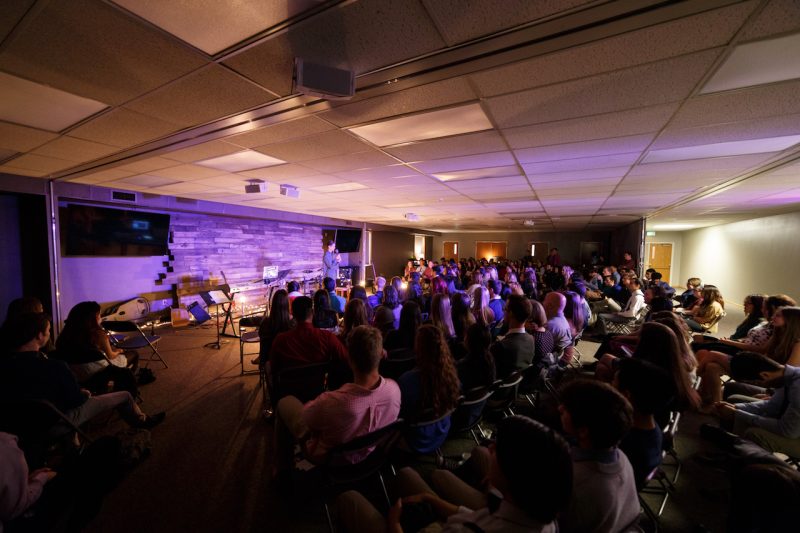Multi-Site Church Issues
 “One church. Multiple locations.” That’s the tag line for hundreds of churches that have expanded by way of adding entirely new campuses as part of a multi-site strategy. In fact, according to the research team at Leadership Network, there are over 5,000 churches that have adopted the multi-site model.
“One church. Multiple locations.” That’s the tag line for hundreds of churches that have expanded by way of adding entirely new campuses as part of a multi-site strategy. In fact, according to the research team at Leadership Network, there are over 5,000 churches that have adopted the multi-site model.
Just three years ago, in 2009, there were about 3,000 multi-site churches, so the current growth curve is so fast that it’s even eclipsing the growth rate of mega churches (churches that have >2,000 attendees per weekend)! Every growth chart shows an increase in both the number of multi-site churches and in their rate of growth. In an economy that’s still struggling, this is a hot growth area.
The Perfect Market
The multi-site church movement is one that the AVL industry is perfectly suited to serve because multi-site almost always includes a good deal of technology, training and service needs. In addition to the normal demands of audio, video and lighting of any church venue, there is also a necessary infrastructure to stream, record and share audio and video (and even communication channels, click tracks and time code sync) between campuses.
There are three basic multi-site church models: satellite campus, extension campus and church plant campus.
The satellite campus is the most common type of multi-site church model. In this scenario, the main church sends out a stream of audio and video of what’s happening live or time-shifted and the satellite venue receives at least the sermon/teaching via video.
An extension campus is a campus that shares the resources and even some of the staffing from the main campus and is usually in close proximity to the main campus. Here the goal is to reach other nearby communities that are logistically too far for people to drive to the main campus by placing a local campus in their city/neighborhood. Again, audio and video are shared (or at least received by the extension campus).
A church plant campus is really a way to plant a new church but keep it part of the same church family — at least at first. Church plants that go it alone often struggle to have the resources or name-recognition to experience heavy, sustained growth. The idea with a church plant campus is to give the new church plant a shared identity and financial/physical resources to get them up and running. Some of these have their own campus pastor or even senior pastor, but fall under the governance and polity of the main church. The technology infrastructure is important because many of the teachings and resources are shared from the main campus.
In each of these scenarios (and other iterations), the multi-site model requires both local technology needs and shared tech resources.
Standardization is Key
Because the main campus is the originator of technology decisions, it simply makes sense to use the same tools — or at least the same brands — at each location. The redundancy in training, operation and troubleshooting is extremely valuable to churches because many will not add full-time staff at the multi-site venues.
From a manufacturer’s standpoint, the opportunity to market this strategy to churches is huge. Think about it: you have the chance to make the sale again and again and again, not just the first time. It’s not even high-pressure sales, because you’re meeting a need of the church and making it easier on them to scale their production needs and volunteer operations. With this in mind, start thinking about multi-unit service options to help churches make upgrades and schedule replacement components all at the same time. Make this affordable and simple and you’ll have a much more satisfied church client — highly important in a market famous/infamous for being heavy on word-of-mouth recommendations from other churches.
Systems integrators, too, are also poised to establish services as multi-site church experts. The expandability and scalability of technical systems has long been a hallmark of churches that are known for squeezing every last moment out of their equipment. From a service standpoint, thinking long-term with the church helps them see the end game of redundant systems, processes, training, and documentation. ‘Do once, repeat many’ is not only smart, it’s a great selling point.
Backup & Redundancy
The upside of multi-site for churches is the ability to share the message and resources from one main campus to many other campuses. The potential downside is a technology failure. In these environments, failure has much more significant implications than in a single location.
Imagine a weekend where the video and audio stream suddenly died. Or when the sync between the two becomes hugely distracting. Or if the playback device suddenly reboots in the middle of the message. Or a hundred other equally damaging scenarios. In a multi-site venue, failure is far less of an option.
Insomuch as standardization is key, redundancy is necessary. From redundant power supplies for the FOH mixing console, to dual-mic wireless for the main speaker, to dual recording/playback devices, having the extra rack space and budget to add redundant technology is part of the original design consideration, not a Monday-morning P.O. for a quick fix after a Sunday meltdown.
Manufacturers that have built-in redundancy need to promote it through targeted marketing campaigns. ‘When failure is not an option’ is the rule of the day. Like other mission-critical vertical markets, specialized service options for multi-site churches for overnight emergency replacements and sub one-week ship-repair-ship solutions are the kind of premium insurance policies these churches need. Dealers, too, have the opportunity to provide on-call service technician contracts and in-stock replacement parts for providing need-it-right-this-second options for these venues.
In an industry that’s always converging with other industries (high-voltage electrical, telephony, information technology, etc.), the AVL industry can provide more than just the gear and the talent: They can bring years of production experience from touring, road shows, network operation centers and military installations that each have aspects of ‘failure-is-not-an-option’ as part of their business model to bear on the church multi-site market.
Retrofit to Future Fit
I’m still surprised to find that many churches have gone multi-site — and are live right now — that haven’t added the strategic thinking above into their model. These churches are simply walking blindly into the next catastrophe that they hope won’t (but will) come. This opportunity is not simply for those churches considering multi-site, but also for those already full-tilt-boogie in multi-site without the redundancy, training or systems to ensure consistency week-in and week-out.
Multi-site retrofits are a serious need, which also means standardizing the main campus first in many cases. The opportunity to serve these churches well by helping them aim for zero-failure Sundays can start right now – and I’m here to tell you that you’ll have senior pastors thanking you and singing your praises to their friends when they have a string of zero-issue Sundays!
The church market is one where trust is slowly given. Helping a church with more than one campus is a worthy endeavor because it provides manufacturers and integrators alike with the opportunity to build trust again and again. This kind of trust equity turns into relational equity when they tell their pastor friends about your solutions and the peace-of-mind they have in knowing that every campus is ready every weekend!
A former staff member at three mega churches and church technology consultant, Anthony Coppedge has developed a respected reputation as a leader in technical and communications circles within the church marketplace. Reach him at anthony@anthonycoppedge.com or on Twitter at http://www.twitter.com/anthonycoppedge





